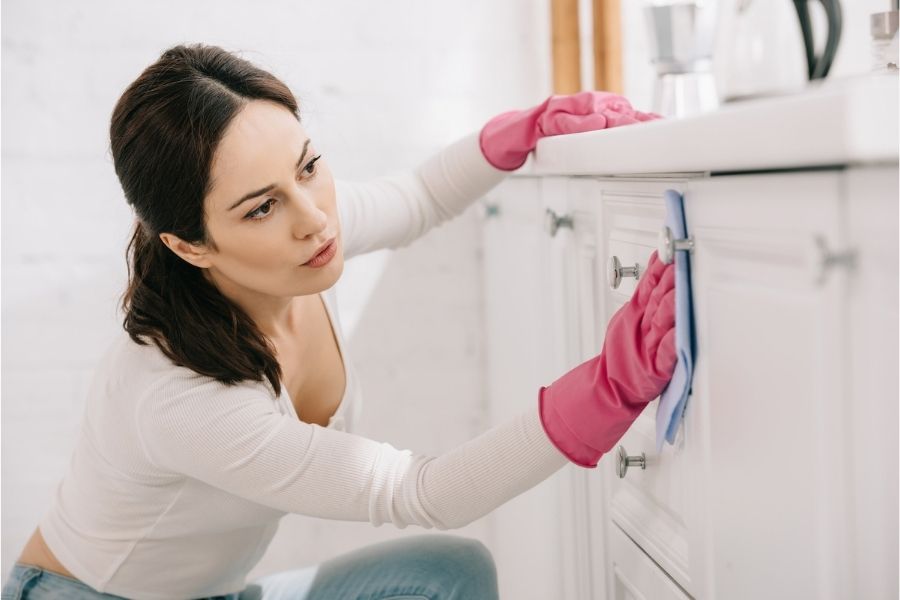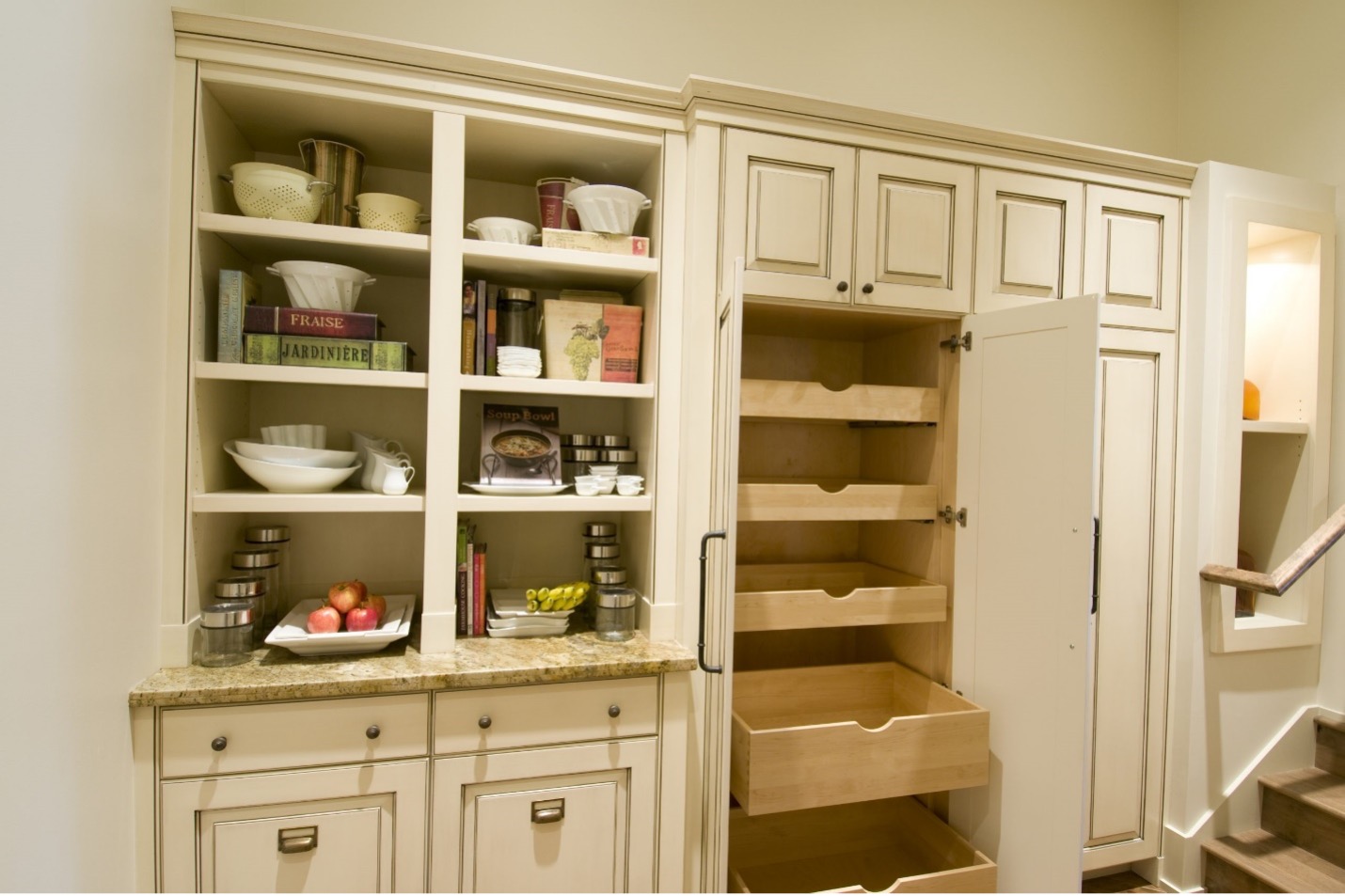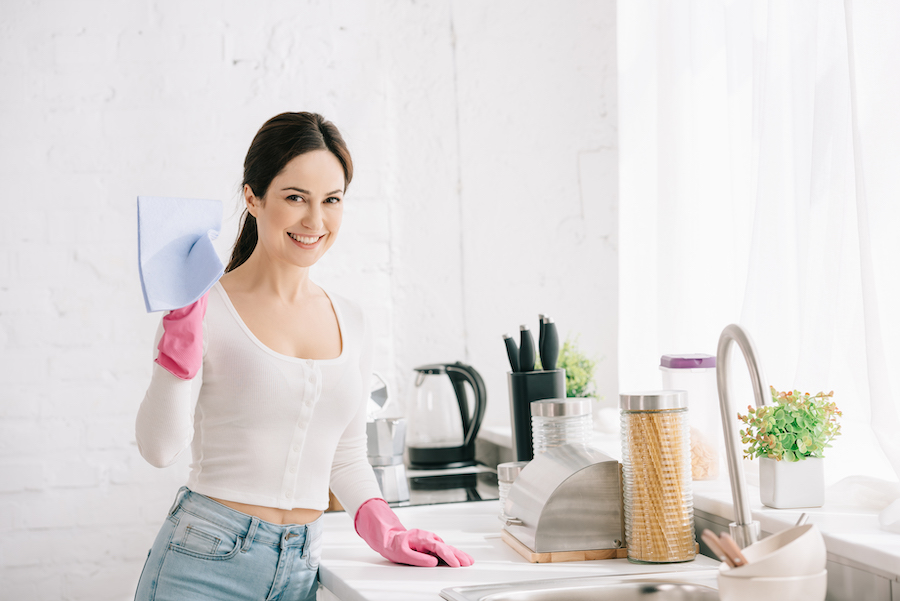
4 Tips for How to Clean Wood Cabinets
It doesn’t take long for things to get dirty in the kitchen.
Whether it’s bacon grease popping out of the pan, spaghetti sauce splattering everywhere, or moisture buildup collecting dust and debris, when you’re working in the kitchen, things don’t stay clean for long.
No matter what messes you’re making, inevitably, those handcrafted kitchen cabinets are going to need some cleaning, and they’ll probably need it sooner rather than later.
But you have to know how to do it properly; otherwise, you’re running the risk of doing damage.
So, this article is going to go over the dos and don’ts of how to clean wood cabinets, so yours can continue to look great for years to come.
How to Clean Wood Cabinets
If you want to learn how to clean wood cabinets, you’ll be happy to know you only need a few items, and you’re likely to find all this stuff hanging around the house, so it probably won’t cost you anything either.
All you need to clean your wood cabinets is a bucket, a toothbrush, a soft cloth, some dish soap, and water. That’s all there is to it.
So, now that you’ve got everything you need, simply follow the four tips below and you’ll have your cabinets looking like new in no time.
1) Choose the Right Cleaning Solution
When you want to learn how to clean wood cabinets, the most important thing to know is how to choose the right cleaner.
There are hundreds, if not thousands of different cleaning products out there, and while many of them claim to be great for cleaning wood, the truth is, most of them aren’t.
While wood is highly durable and handcrafted kitchen cabinets are built to last a lifetime, if you use the wrong cleaning product, you can damage the wood’s finish pretty easily.
That being said, in most situations, the best thing to use is simply some hot water and elbow grease.
If you have a really tough stain, like stubborn, stuck-on food, adding a bit of dish soap should be enough to get rid of it.
Despite what many people say, there’s really no need to use abrasive or acidic cleaners on your wood cabinets, and they can actually do a lot more harm than good.
 It would be a shame to allow gorgeous wood cabinets like these to get damaged.
It would be a shame to allow gorgeous wood cabinets like these to get damaged.
2) Avoid These Cleaners at All Costs
There are tons of websites out there claiming that vinegar, for instance, is great for cleaning wood, but the fact of the matter is, anything that’s highly alkaline, acidic, or abrasive can ruin the look of your wood cabinets.
Vinegar can be heavily diluted, which would minimize the chance of doing damage, but the fact of the matter is, once it’s diluted, vinegar isn’t any more effective than water and dish soap.
So, to minimize the chance of damaging your wood cabinets, it’s best to stay away from anything other than water, dish soap, and elbow grease. This includes things like:
- Vinegar
- Baking soda
- Lemon juice
- Tile cleaners
- Sodium hydroxide
- Ammonia-based cleaners
Any of these highly abrasive, alkaline, or acidic cleaners can permanently harm the finish on your kitchen cabinets, causing dark spots, discolouration, and other unsightly damage that’s not easy to fix.
Refinishing kitchen cabinets can cost thousands of dollars, so do yourself a favour and just avoid this stuff at all costs.
3) Choose the Right Cleaning Tools
Aside from avoiding the cleaners above in favour of hot water, dish soap, and elbow grease, it’s also just as important to make sure you’re choosing the right cleaning tools.
Using things like brushes with metal bristles, steel wool, or scouring pads is a definite no-no. These kinds of tools are highly abrasive and bound to scratch the finish on your cabinets.
The best thing you can do is just use a soft cloth and a little bit of muscle.

Using a soft cloth instead of abrasive cleaning tools will allow you to avoid doing any damage.
However, depending on how intricate the woodworking is on your cabinets, there may be a lot of nooks and crannies that are hard to get into with just a cloth.
If you’re having trouble trying to clean those crevices, a toothbrush should do the trick, as it’ll allow you to get into all those little grooves.
It’s also a good idea to dust your cabinets on a regular basis because when dust mixes with dirt, grease, oil, and moisture buildup, it can become incredibly sticky, and make them significantly harder to clean.
4) Make Sure They Get Thoroughly Rinsed and Dried
When it comes to learning how to clean wood cabinets, one thing people tend to forget is to make sure they properly rinse and dry their cabinets after cleaning.
Any cleaner, even dish soap and water, can leave a film on your cabinets that will tarnish the look of their finish if it’s not thoroughly rinsed off.
So, after you’ve cleaned all the grime off of your cabinets, make sure to use another soft cloth and clean water to go over them one more time and remove any remaining dish soap or dirty water.
There’s no need to soak them, so whether you’re cleaning or rinsing, make sure your cloth isn’t dripping wet.
Using too much water – especially if it doesn’t get properly dried – can cause the wood to expand, and in extreme cases, this can cause warping, cracking, or splintering.
That being said, once you’ve cleaned and rinsed your cabinets, you’ve got to make sure they get thoroughly dried with a clean towel.
And don’t ever try to dry your cabinets with hot air by using a hairdryer, for instance, as this can also do permanent damage to the wood.
Do you want to get your cabinets refinished, or have handcrafted kitchen cabinets installed as part of your new custom kitchen design? Our master woodworker, Andy Ingram, has over 30 years of experience and he can create pretty much any design you have in mind. If you’d like to learn more, contact us.